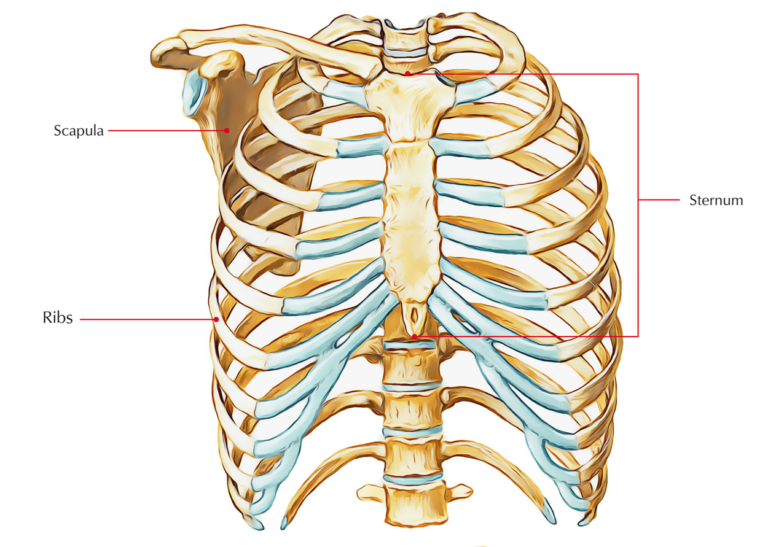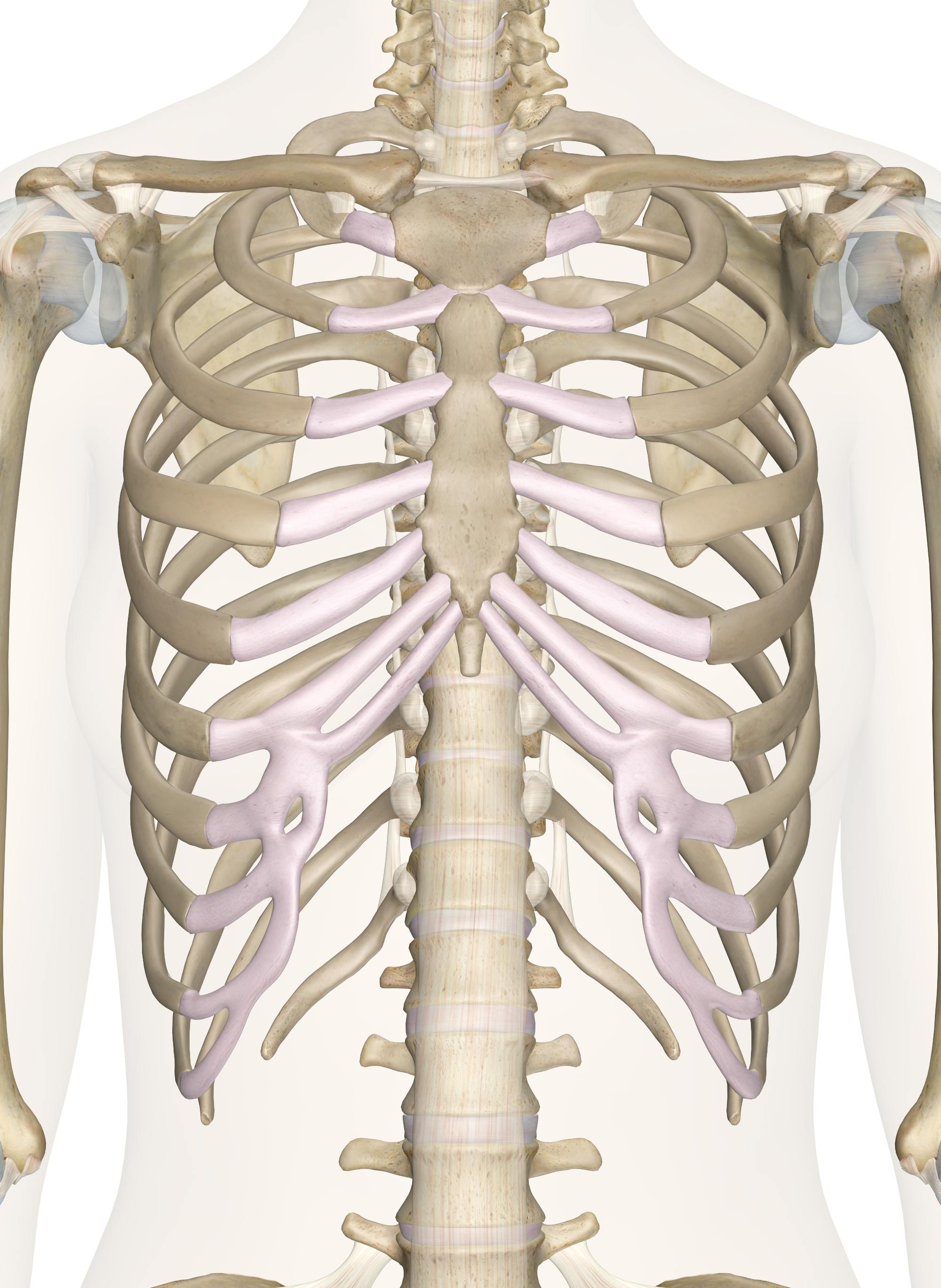

The xiphoid process is largely cartilaginous in structure, and completely ossifies late in life – around the age of 40. It is variable in shape and size, with its tip located at the level of the T10 vertebrae. The xiphoid process is the most inferior and smallest part of the sternum. There are smaller facets for articulation with parts of the second and seventh ribs – known as demifacets.

These articular facets articulate with the costal cartilages of ribs 3-6. The lateral edges of the body are marked by numerous articular facets (cartilage lined depressions in the bone). It articulates with the manubrium superiorly (manubriosternal joint) and the xiphoid process inferiorly (xiphisternal joint). The body is flat and elongated – the largest part of the sternum. The sternal angle is commonly used as an aid to count ribs, as it marks the level of the 2nd costal cartilage. This can be felt as a transverse ridge of bone on the anterior aspect of the sternum. Inferiorly, the manubrium articulates with the body of the sternum, forming the sternal angle. On the lateral edges of the manubrium, there is a facet (cartilage lined depression in the bone), for articulation with the costal cartilage of the 1st rib, and a demifacet (half-facet) for articulation with part of the costal cartilage of the 2nd rib. These fossae articulate with the medial ends of the clavicles, forming the sternoclavicular joints. Either side of the jugular notch, there is a large fossa lined with cartilage. The superior aspect of the manubrium is concave, producing a depression known as the jugular notch – this is visible underneath the skin. The manubrium is the most superior portion of the sternum. The cartilage ossifies to bone during adulthood.

In children, these elements are joined by cartilage. The sternum can be divided into three parts the manubrium, body and xiphoid process.


 0 kommentar(er)
0 kommentar(er)
